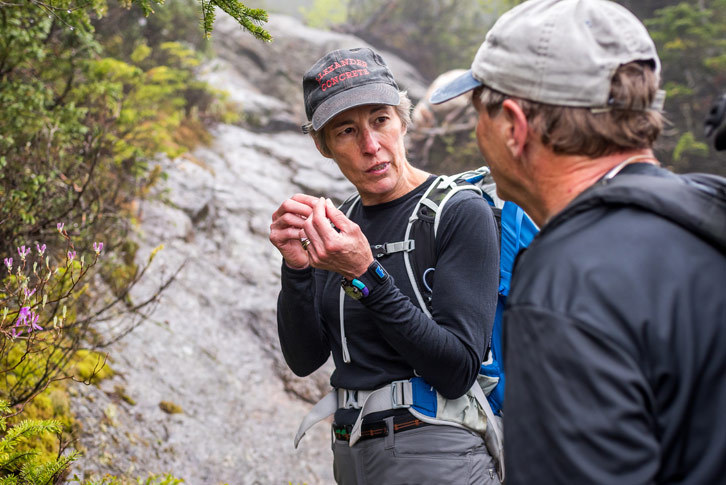Plant phenology describes the science of annual life cycle phases of plants, and collecting this data can help scientists understand how factors such as climate and elevation in influence those cycles. I’m one of several people who do this work for the Appalachian Mountain Club (AMC), which has determined that plants now bloom as much as two weeks earlier in the valley than they have historically, but only two days earlier on the summit. This change is likely connected to climate change. Our data is also fed to the National Phenology Network, and Colby-Sawyer’s Alpine Communities Field studies class uses it as well.
AMC’s staff ecologist Doug Weirauch has been directing a research program to collect this data for years but has been limited to sites near the AMC’s high mountain huts where resident summer naturalists have collected data. Crucial to this work is that it be done regularly and accurately, which ideally means the same person does it on regular intervals. Anyone who’s hiked on Mount Washington knows the commitment it takes to go more than nine miles once a week all summer. And, the task of stopping at nine sites to identify, count and observe phenological phases on tiny alpine plants is a formidable one. Anyone who knows me, though, knows this work is right up my alley!

The 15 species on my list include those that grow only in lower elevations, those that grow only in the alpine zone and some that grow from the valley to the alpine zone. Establishing my research sites presented two challenges: one was to find sites containing as many of the target species as possible that I could relocate by identifying markers, such as trail junctions or other distinguishing markers; the other was to find the highest elevation sites for valley species and the lowest ones for alpine species. My sites were along the Ammonoosuc Ravine Trail to Lakes of the Clouds Hut, south along the Crawford Path to one site past the junction of the Monroe Loop, and then north along the Crawford Path to the junction of the Gulfside Trail. My two summit sites were off-trail, but I could get to them without damaging the ground cover by walking on rocks.
Alpine flora is adapted to live in a harsh environment subjected to cold temperatures, high winds and extended periods of cloud cover. They are perennial and of short stature. Altitude limits the growing season; consequently, flora quickly move through phenological phases in order to reproduce. This research has been eye opening — while I have always made an effort to witness the alpine zone’s early bloom, visiting the same sites weekly has showed me the speed at which these plants progress from emerging leaves to full foliage to colored and, finally, dropped leaves. At the same time, flowers bud and open, fruits ripen and go to seed.
I suspect my observations will lead to more questions as I continue to observe these plants. In the meantime, I’m lucky enough to merge my research, teaching and recreational interests in a place I’m happy to visit regularly.